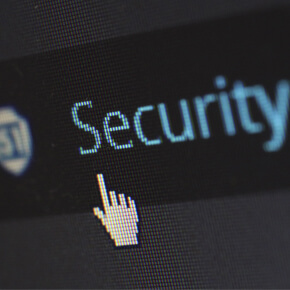
Cybersecurity Essentials for the Everyday World (Part 2)
In our previous article, we spent some time reviewing some security basics specific to monitoring of our bank and credit card accounts, and best practices in establishing passwords.
In this article, we take a further look into security pitfalls concerning your computer and smartphone.
In this day and age with all of the bad news that is constantly in the media about security breaches, compromised email accounts and personal credit data, it might seem unbelievable that many consider it too much of a chore to establish an access password on their computers and smartphones. As this article is published, most devices now force their owners to set an access code in some way. That is, you can say no and opt out of doing it, but not because you weren’t asked or warned first. Doing this is a must. The first order of business is to set up an outside wall that the bad guys can’t climb over.
Password setup on your computer should be a priority for you as well. Should someone happen to take your laptop from a parked car, or when you are in public and perhaps briefly step away, the personal information you have stored may be at risk.
That leads us to another axiom of passwords: keep track of them but not where someone who is unauthorized can get to them. Someone I know very well and who should know better has heard this from me countless times yet continues to keep a Word document on his local hard drive entitled “passwords.doc”. What do you think is kept in there? Lets not make it too easy, folks…if you do this, call the file something else and password protect the opening of that file. Storing the file as an email saved in the draft folder of your email program is also a bad idea. If I can think of it, I can trust the bad guys are way ahead of me. If somehow your email account is compromised, access to every other credential you had saved out there will be in the hands of a hacker as well.
Next, you should seriously consider activating Find My iPhone or Find My Device for Android, or the equivalent depending upon your device. I was in Denver last summer and had to give directions to the cab driver to reach the hotel (yes, I really had to do this, but that’s another story). When we got there, it wasn’t until after I had checked into the hotel and the driver was long gone that I realized I had left my phone on the seat in the cab! After panicking briefly, I remembered I had activated this service. I just logged in on my wife’s device to send the lost phone command to my phone, which was still taking a ride in the cab, ever more distant. In seconds the driver heard the alarm, saw the huge message on the screen that the phone was lost and to swipe to call me. In fifteen minutes, he returned with my phone! The tip I left him in thanks was much cheaper than the cost of a new iPhone.
One other thing when it comes to your personal computers, be they laptops as well as your desktop computer: do you have a regular process of backing up? Do you test the restore function periodically to make sure the backup file can be accessed and hasn’t been corrupted? It happens…a lot! You would be surprised how many instances we come across where computers were being diligently backed up, only to find that when the restore file needed to be accessed for a complete restore or just to restore a few files, the backup file was corrupt, or worse, the password to open it was forgotten…the ultimate insult to one’s self-esteem, you might agree.
Also make sure you’re catching everything that needs to be backed up in your backup. This might read strange, but many of us who store files out on a network shared server may also save files to our local hard drive. Often, our company-managed backup programs will reliably catch what we have saved on the network but will never see or touch anything that is on our local drive. Check with your IT department to see what your options are. You might be keeping your most personal documents there, as well as any pictures, even your personalized web browser bookmarks, are stored on your local hard drive, often in a hidden folder, for example. These could be lost for good if you have a local hard drive crash or corrupting event and they haven’t been backed up.
Ultimately, following some basic best practices such as these will both shield your personal data from unauthorized access, and ensure your ability to smoothly restore any data that might nonetheless have become lost, either through theft, or as the result of data corruption.
